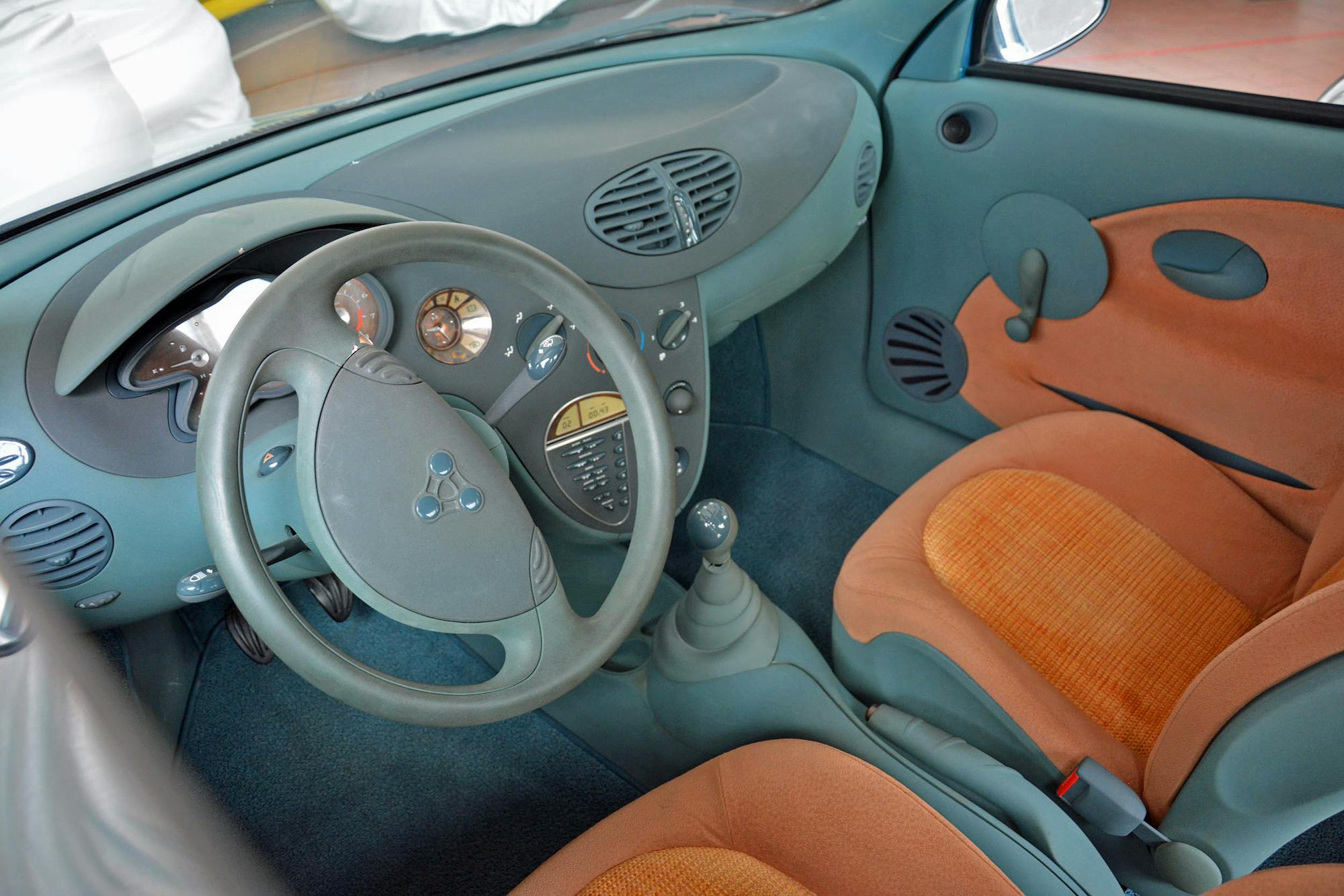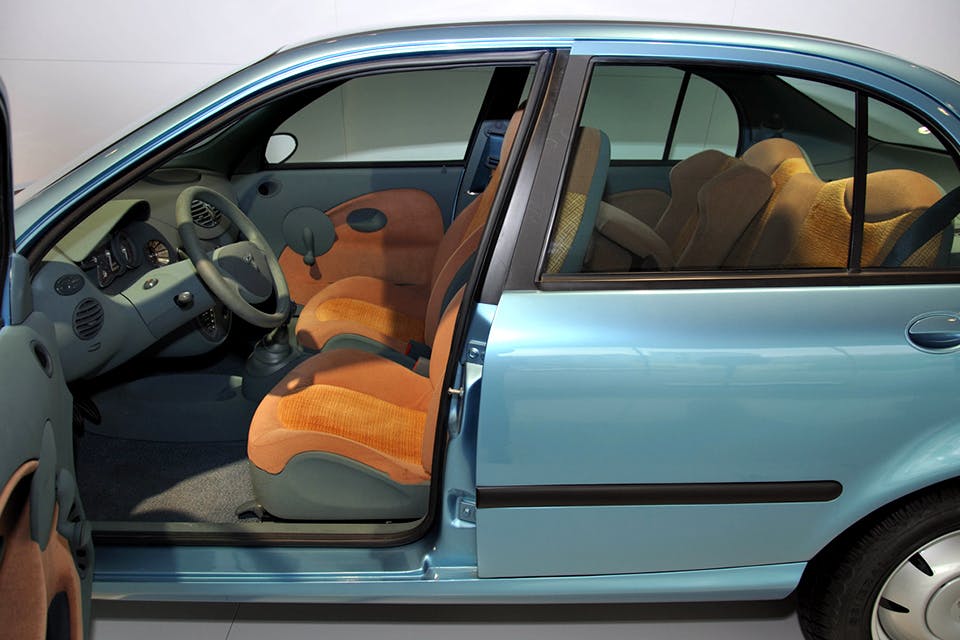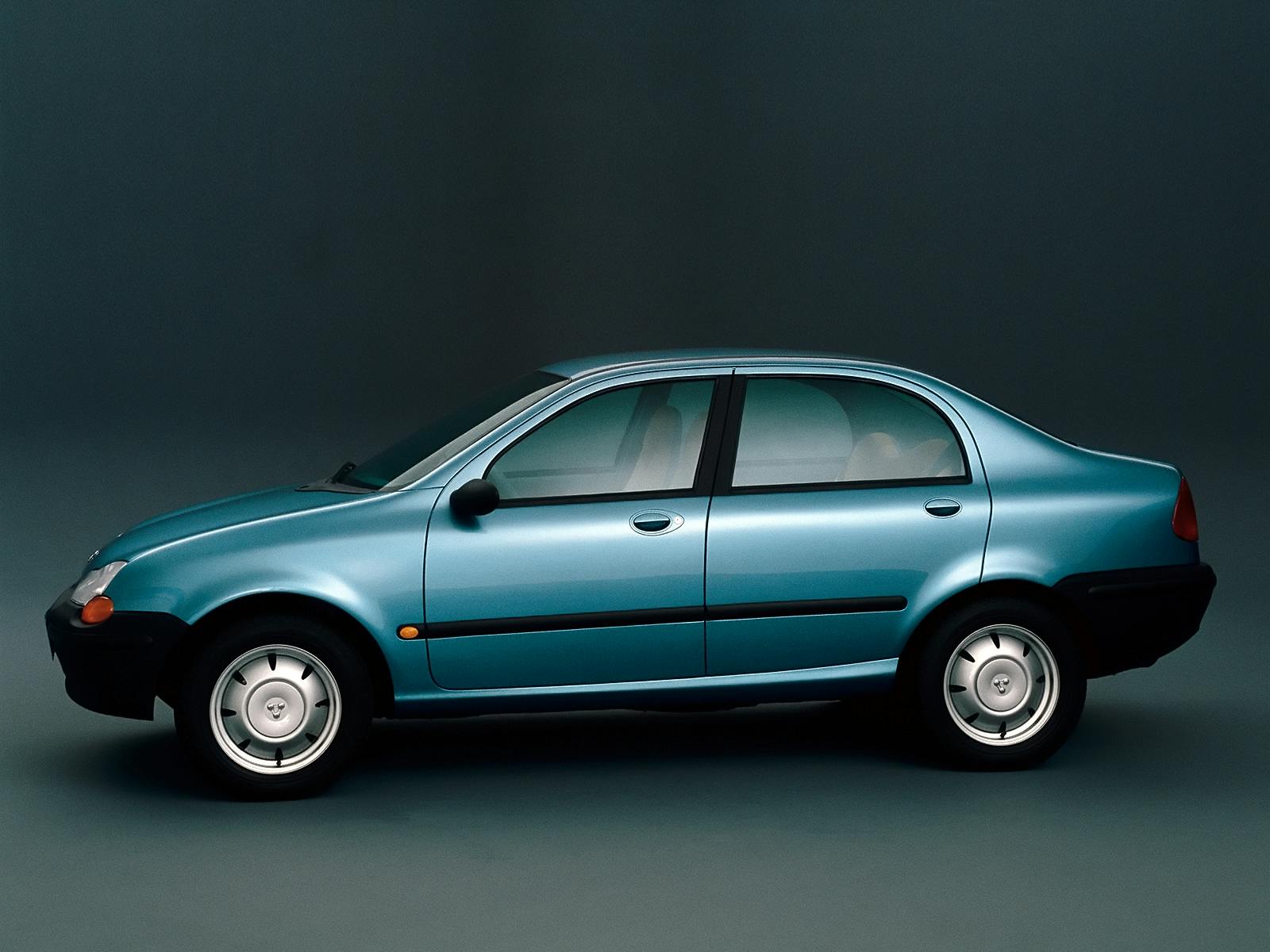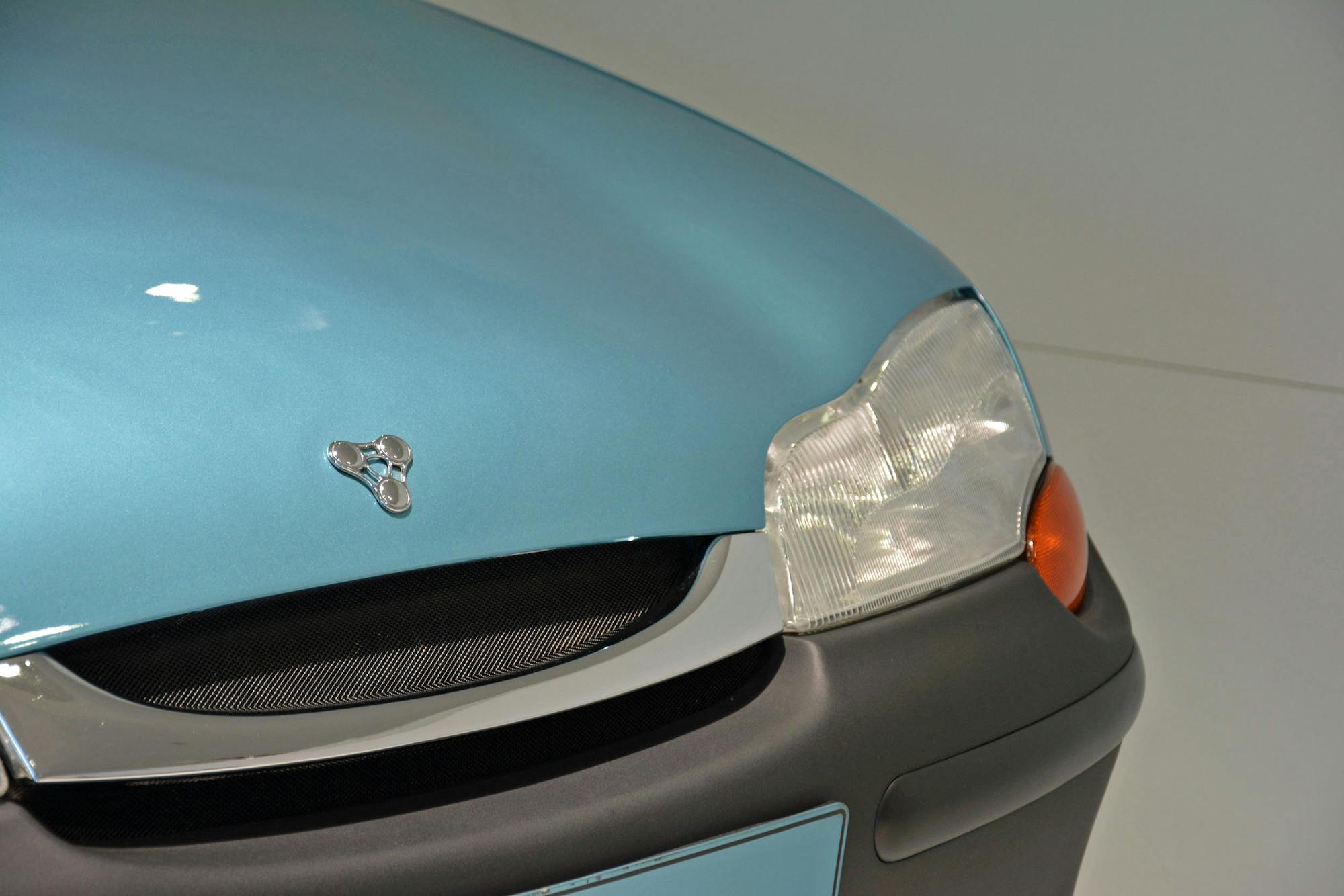Media | Articles
C88: Porsche’s ill-fated Chinese eco-box
Porsche isn’t known for affordability. The entry-level Macan costs $57,500, which puts it on the higher end of the small luxury-crossover spectrum. Thirty years ago, however, when the company was in the throes of reevaluating its profitability and future survival strategy, it pondered a different path. Porsche nearly released a no-frills sedan in the 1990s that would have changed the course of its history. Dubbed C88, this canceled project was initially envisioned as a people’s car for China, and a bold attempt to significantly increase sales. While the 964-generation 911 Carrera was busy competing with some of the best sports car’s in the world, the C88’s chief rival would have been the Plymouth Neon.
China and Porsche each entered the ’90s with their own clear problem to solve. Porsche’s was financial in nature, as the company entered the decade in financial straits. Part of the issue was falling sales in the United States, its largest market. Annual sales fell to 3729 cars in 1993, down from 9139 in 1990 and 30,471 in 1986. Executives canned several projects to save money, including a 911-esque, V-8-powered sedan called 989 and a roadster named 984 that would have bridged the gap between the 914 and the Boxster. Porsche urgently needed to expand into new segments with new models, and China looked like it might be the place to do it.
Halfway across the world, China’s was feeling the growing pains of lagging behind other major national powers in promoting private transportation. For decades, only customers who were very rich, very influential, or both could afford to buy a personal car on the Chinese market. As such, cars were considered a symbol of capitalism outside of the regular citizen’s reach. While this situation began to change in the 1980s (AMC, Peugeot, and Volkswagen were the first to set up joint ventures), the floodgates opened in 1994 when China’s State Council drafted the Industrial Policy for the Automobile Industry declared that “the state encourages individuals to purchase automobiles.”
This was a big deal, but making more cars for a still-nascent market was easier said than done. On top of that, China’s car-building heritage was limited. Foreign firms were invited to lend a hand.

Chinese officials asked European and American carmakers to build a prototype illustrating their vision of a people’s car. It needed to do for China what the Model T did for America and the Volkswagen Beetle did for Germany. The design studies had to outline a vehicle that was cheap to build, but companies were free to experiment with different body styles, mechanical configurations, and interior layouts. China promised the winner a lucrative production contract via a joint-venture with state-owned firm First Automotive Works (FAW). Porsche prepared its entry into the contest in merely four months.
Marketplace
Buy and sell classics with confidence
While the Chinese government’s instructions were vague, Porsche had clear goals in mind. It set out to design a car that was simple to manufacture, solid, and safe even by international standards. Executives chose the name C88; C stood for China and 8 is considered a lucky number in Chinese culture. (This logic partly explains why the Alfa Romeo 164 became the 168 for its misfired stint in Hong Kong. I say “partly” because the reason the name was changed to begin with is that the number 4 is associated with death.)
Stretching the definition of a Porsche

Viewed from the outside, the C88 almost looks like the Dacia Logan’s long-lost predecessor. Sitting high to navigate less-than-perfect roads in the Chinese countryside, it’s a relatively compact three-box sedan with a generic design, econobox-chic black bumpers, skinny 15-inch steel wheels, and little in the way of trim. Adding bright accents would have increased production costs. While the sedan is the only body style that made it to this development stage, period documents indicate Porsche ultimately hoped to add a two-door model to the range.
When you think about the manner in which the Cayenne, Macan, 718, and Panamera all cherry-pick 911 styling cues, the C88 is remarkably distinct. Unfortunate-looking, but distinct. The sedan didn’t even get the honor of wearing Porsche’s crest. Instead, the company drew a new logo made up of three circles arranged in a triangle, representing the Chinese family; one circle is for the mother, another for the father, and the third for the one child that was permitted under national law.
This distinctive lack of Porsche-ness was also evident inside the cabin. The C88 almost looked like it emerged from Chrysler’s design studio. The driver faced a two-spoke steering wheel, an analog instrument cluster with four gauges, and an asymmetrical center stack. Orange upholstery added a touch of contrast to the green and gray dashboard, and equipment was kept to the bare minimum.
On paper, the C88 was rather Beetle-like in its economical engineering. Power came from a 1.1-liter flat-four engine tuned to develop between 48 and 68 horsepower depending on the variant. The engine spun the front wheels via a five-speed manual transmission and it gave the C88 a top speed of about 100 mph in its most powerful configuration. Some historians claim Porsche also had plans to offer a diesel engine.

With the C88, the firm had ventured into uncharted territory and, naturally, not everyone in Stuttgart was on board. The business potential was simply to immense to ignore. Chinese streets were still dominated by bicycles in the 1990s, so earning a contract to build China’s people’s car was a little like winning the lottery. Porsche believed it could sell between 300,000 and 500,000 units annually on the Chinese market and allegedly had formed vague ambitions to later expand into other major emerging markets, like India. Then-CEO Wendelin Wiedeking traveled to the International Family Car Congress held in Beijing in November 1994 to unveil the C88 and he reportedly even gave a speech in Mandarin. Porsche wasn’t the only Stuttgart representative in attendance: Mercedes-Benz showed the minivan-like Family Car China (FCC) concept.

Bait and switch?
Whether Chinese government officials preferred the C88, the Mercedes FCC, or one of the other prototypes to throw its hat into the ring is a moot point; China canceled the project in 1995. Nobody won the contract.
Some sources claim Chinese officials orchestrated an elaborate scheme to access some of the best ideas and technologies and exploit them to jump-start local manufacturers, though this has never been definitively proven.
Without a clear purpose any longer, the C88 remained a one-off. Porsche did soon after embrace lower-cost models and higher-volume manufacturing, pursuits that shaped the original, 986-generation Boxster presented in 1996. A premium roadster is not as mainstream as a sedan, and affordability is always relative, but the Boxster allowed Porsche to remain sports car-focused and break into a whole new customer base.
In an odd twist of fate, after decades of huge industrialization, China has become Porsche’s largest market. The company sold 95,671 cars there in 2021 compared to 70,025 units in the United States.
As for Mercedes-Benz, its FCC concept influenced the original A-Class (W168) presented in 1997.
















































Let’s suppose it happened:
Porsche selling hundreds of thousands of cheap cars in China under a local brand, sharing no obvious Porsche design… seems harmless to the global brand. But money in the bank.
What they have done instead, the soccer-parent dilution of a sports/car brand in all the key markets will ultimately, I believe, reduce the prestige of the brand. But money in the short-term bank.
I’m betting Porsche is thankful this little tin can never came to fruition.
beware of China. If you cannot design it yourself, steal it.
exactly what they have been doing for years
Wow, nothing in it says Porsche at all. It screams “crap car”.
I could see China just wanted to see what they came up with to steal it. Either way doing business in China assume your IP is being stolen.
just exactly what china has and is doing for years. wake up world.
just exactly what china has and is doing for years. wake up world.
The interior screams “cheap crap”. It’s horrible
Ironic that china went from no cars to too many cars lol
This crapbox looks like the early version of the Geo Metro
Don’t do BUSINESS IN CHINA if only there wasn’t this thing called GREED
Australia was a recent example of what CHINA does when it doesn’t suit them